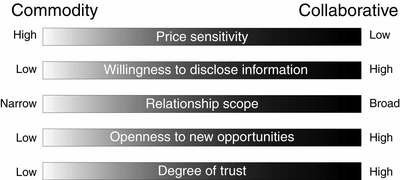Keynote at Cisco Insight 2010: Innovation beyond boundaries and the role of knowledge-based relationships
Earlier this week I gave a keynote speech to Cisco Insight 2010, the conference for its top-tier partners, with the title Innovation Beyond Boundaries. I’ve always thought it anomalous that I had never done any work for Cisco, given its messages such as the Human Network are so aligned with mine, so I’m glad that connection has been made.
While I spent much of my presentation looking at some of the more interesting implications of a hyperconnected world, suitable for an audience well used to these ideas, I also explored the critical role of knowledge-based relationships in effectively innovating beyond boundaries.
The spectrum of relationship styles
In the preface to my book Developing Knowledge-Based Client Relationships I quoted Norman and Ramirez’ outstanding 1993 HBR article From Value Chain to Value Constellation, who said that the essence of strategy is to:
“link together the only resources that matter in today’s economy: knowledge and relationships.”
Seventeen years later, that statement precisely captures the state of the world today.
Yes, it is absolutely an intensely networked economy. Yet the relationships that make up that network vary from tenuous to committed. The full spectrum of relationships are required. An organization cannot function with only commoditized supplier relationships or strong partnerships – both are required depending on the function and situation. However the danger is that the shift to commoditized, price-based relationships takes away from the energy put into relationships based on trust and deep mutual knowledge.
Today more than ever, those who are better at developing rich knowledge-based relationships have an enormous advantage over their competitors, not least in being able to innovate more effectively. That was why I wrote the first edition of Developing Knowledge-Based Client Relationships in 2000. Today I work more broadly with all manner of knowledge-based relationships, particularly those that drive innovation, and the networks formed by those relationships. Yet the power of knowledge-based relationships still holds.

